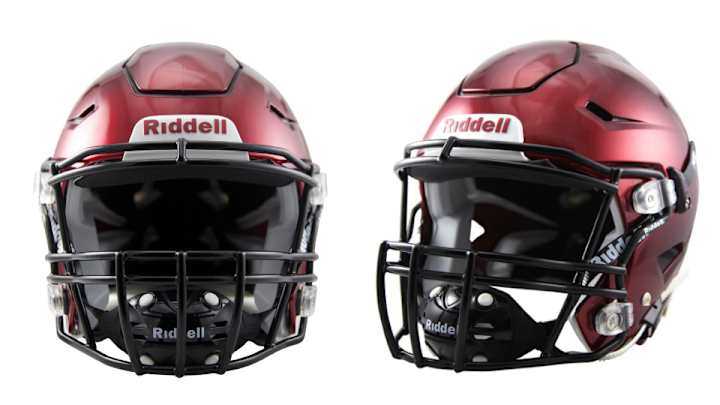’Tis Better to Give: Riddell's New Helmet Flexes to Protect

When one object meets another with significant force—say a strong safety missiling into a receiver—something’s got to give. The sports equipment company Riddell has determined it should be the helmet. While traditional football helmets have encased the head in a rigid shell (remember the old term brain bucket?), Riddell’s new SpeedFlex helmet is designed to flex in a way that directs the force of impact (that incoming strong safety) away from a player’s head.
Arkansas, Miami, Florida, Florida State, Texas and San Diego State have already signed on to use the helmet beginning in the 2014 season. Engineered in Riddell’s Illinois-based development lab, the SpeedFlex features several aesthetic changes—especially on the top of the helmet, where the shell has a paneled look that allows actual movement on the helmet. That “flex,” as the company calls it, within the shell, face mask and at the point where the face mask attaches to the helmet, dissipates the energy of any hit throughout the helmet system and away from the head.
Inside the helmet, synthetic rubber and polyurethane foams absorb impact energy while retaining their position and form for continued play. A new liner system conforms to the shape of a player’s head, while a new chin strap system allows players to tighten or loosen straps by essentially pushing a button on the side of the helmet.
In addition, Riddell has developed what it calls its InSite Impact Response System (available universally this season), which uses a sensory pad inside the helmet liner to measure impact severity and even transfer alerts to the sideline. InSite does not diagnose concussions, but it does measure head impacts, using Riddell’s data from more than two million points of on-field impact to create a “head impact exposure metric” for measurement in four areas: linear and rotational acceleration, duration and location. Personalized alerts set different thresholds for individual players.
After all, as Riddell firmly believes, it’s important to be flexible.
Tim Newcomb covers stadiums, design and gear for Sports Illustrated. Follow him on Twitter at @tdnewcomb.
